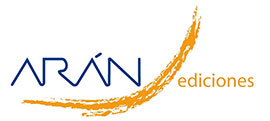Trabajo Original
Composition of breast milk of lactating adolescents in function of time of lactation
 Número de descargas:
19575
Número de descargas:
19575
 Número de visitas:
3991
Número de visitas:
3991
 Citas:
0
Citas:
0
Compártelo:
The aim of this study was to evaluate the composition of breast milk of lactating adolescents in function of lactation time. Methods: We followed 51 lactating adolescents, bet - ween the 6th and 14th weeks postpartum (WPP). The determination of fat, protein and lactose in milk were conducted, respectively, by the methods of Lucas, Lowry and Perry & Doan. Micronutrients were determined by atomic absorption spectrophotometry. Data was presented by the mean and standard error. ANOVA with repeated measures was used and Tukey as post test. It was accepted a significance level of 5%. Results: There was a significant reduction (P<0.05) in protein content during the postpartum weeks studied (6th: 16.6 ± 1.1; 10th: 13.7 ± 1.0; 14th WPP: 12.3 ± 1.1 g/day). The lactose (6th: 60.2 ± 1.9; 10th: 60.4 ± 2.6; 14th WPP: 65.1 ± 4.0 g/day) and fat (6th: 41.6 ± 3.3; 10th: 36.2 ± 3.4; 14th WPP: 31.5 ± 9.0 g/day) concentration remained unaffected. The zinc concentration in the breast milk was lower than that is commonly found in literature (mean 1.16 mg/day). The copper, iron, calcium and phosphorus concentration was sufficient to meet the needs of the infants between 0 and 6 months old. Conclusion: The lactation period did not influence the concentration of micronutrients, lactose and lipids, but there is a reduction on protein of the breast milk. In spite of the reducing concentration of protein, it is sufficient to meet the needs of infants from 0 to 6 months old.
Palabras Clave: Lactancia. Adolescencia. Semanas después del parto. Nutrientes.
Artículos Relacionados:
Trabajo Original: Consumption of nutrients with antioxidant action and its relationship with lipid profile and oxidative stress in student users of a university restaurant
Sueli Maria Teixeira Lima , Kaluce Gonçalves De Sousa Almondes , Kyria Jayanne Clímaco Cruz , Heila Dias De Sousa Pinho Aguiar , Camila Maria Simplício Revoredo , Betzabeth Slater , Jennifer Beatriz Silva Morais , Dilina Do Nascimento Marreiro , Nadir do Nascimento Nogueira
Trabajo Original: Nutrients can modulate the adiponectin concentrations in apparently healthy young adult
Anacarolina Pinheiro Volp , Kiriaque Barra Ferreira Barbosa , Josefina Bressan
Trabajo Original: Ingesta de energía y nutrientes en niños de 2-4 años que asisten al programa “buen comienzo”, medellín (colombia) energy and nutrients intake in childre
Natalia Inés Ledesma Ríos , Diana María Sepúlveda Herrera , Diana Liseth Cárdenas Sánchez , Luz Mariela Manjarrés Correa
Trabajo Original: Relationship of long-term macronutrients intake on anabolic-catabolic hormones in female elite volleyball players
Juan Mielgo Ayuso , Michael C. Zourdos , Aritz Urdampilleta , Julio Calleja Gonzalez , Jesús Seco , Alfredo Córdova
Trabajo Original: Eating disorders during the adolescence: personality characteristics associated with anorexia and bulimia nervosa
Belén Barajas Iglesias , Ignacio Jáuregui Lobera , Isabel Laporta Herrero , Miguel Ángel Santed Germán
Trabajo Original: Nutrients associated with diseases related to aging: a new healthy aging diet index for elderly population
Manuel Lozano Relaño , Lara Manyes , Juango Peiró , José María Ramada
Trabajo Original: Assessment of micronutrients intakes in the spanish population: a review of the findings from the anibes study
Teresa Partearroyo Cediel , M.ª De Lourdes Samaniego-vaesken , Emma Ruiz , Gregorio Varela-Moreiras
Artículos más populares
Revisión: Inteligencia artificial generativa ChatGPT en nutrición clínica: avances y desafíos
ChatGPT y otras herramientas de inteligencia artif...
Revisión: Suplementación con micronutrientes y sus beneficios: ¿por qué y cuándo?
Introducción: los micronutrientes participan en la...
-
Licencia creative commons: Open Access bajo la licencia Creative Commons 4.0 CC BY-NC-SA
https://creativecommons.org/licenses/by-nc-sa/4.0/legalcode




